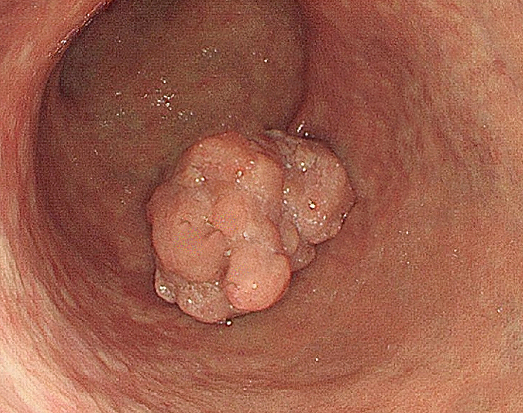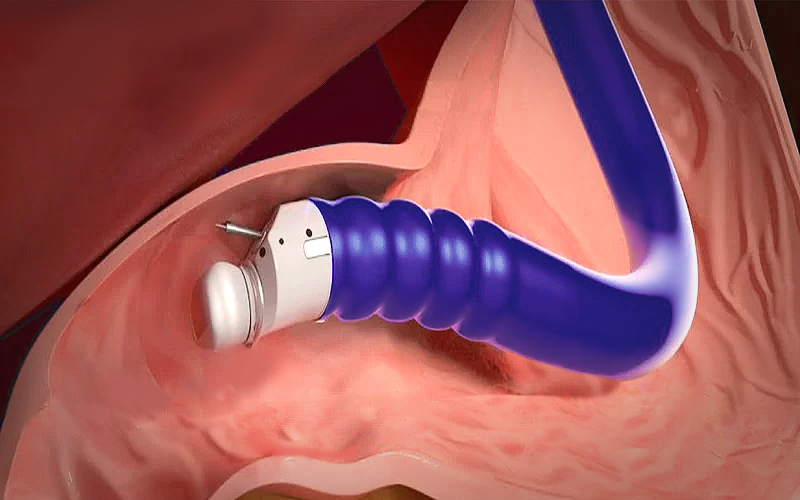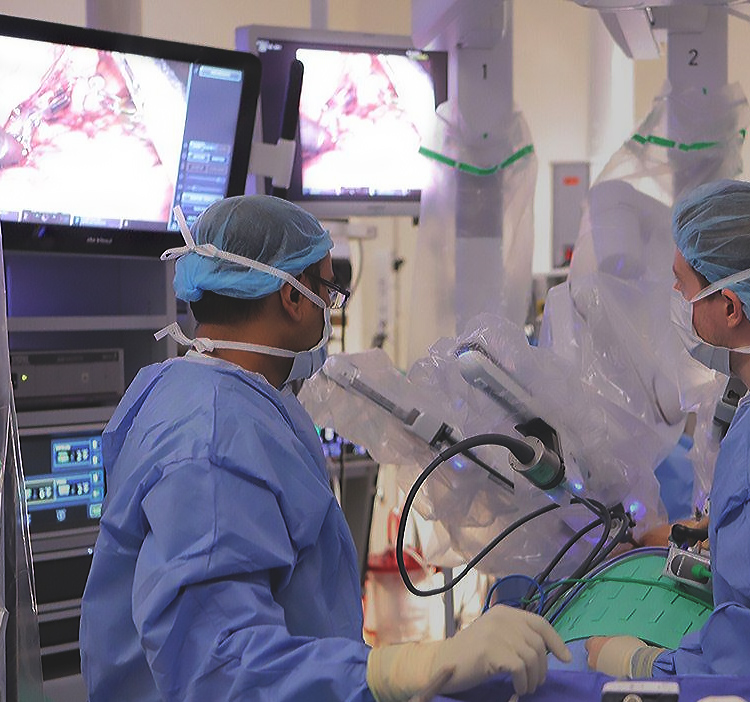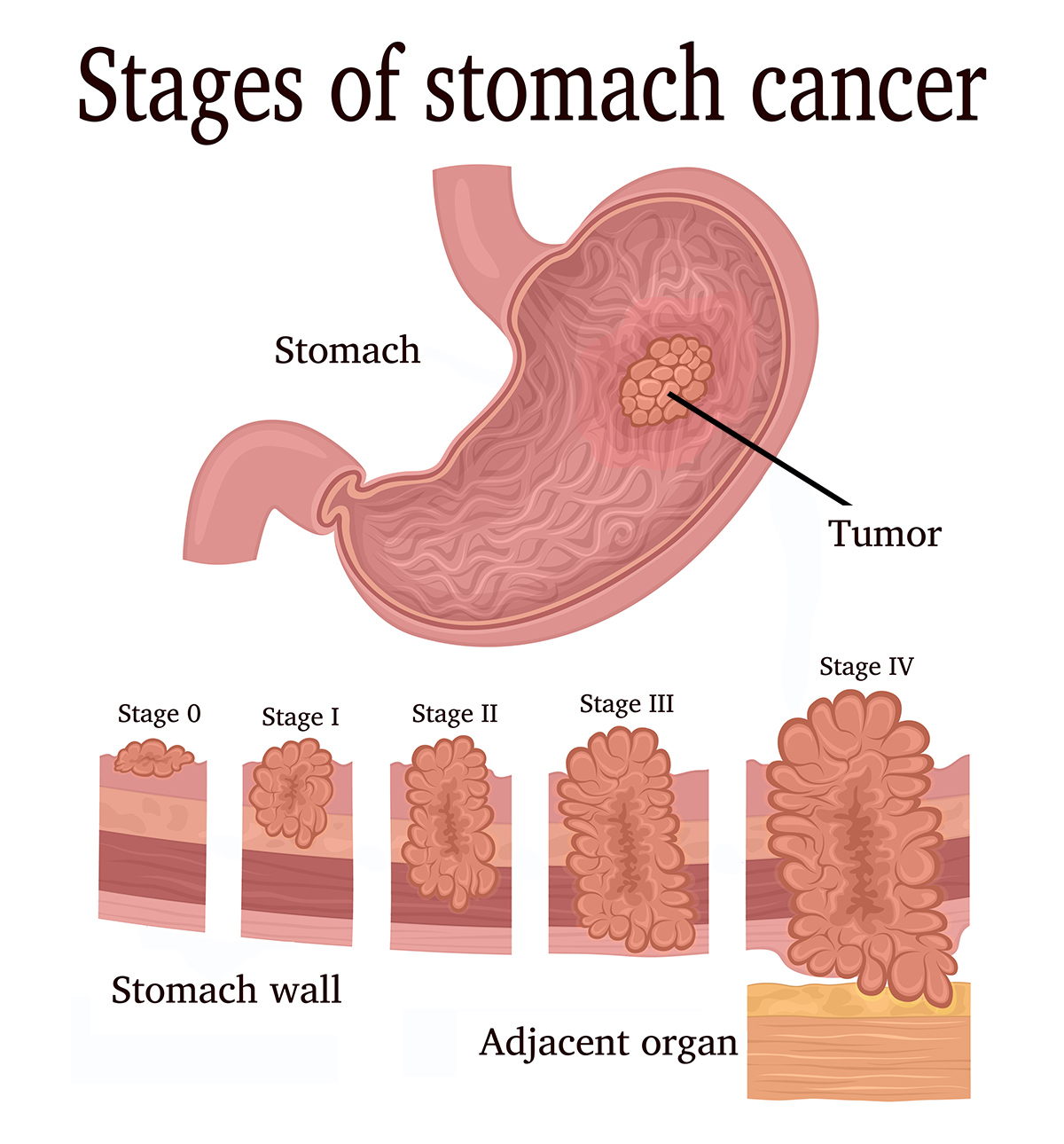What is Stomach Cancer?
Stomach or gastric cancer usually originates from the cells that line the stomach. This may begin as an ulcer or a polyp which may not cause any symptoms, or can cause significant pain or bleeding. In most cases, cancer of the stomach is usually advanced by the time it is detected.
Regardless of an early- or late-stage diagnosis, the specialists at Saint John’s treat the whole person not just the disease, which helps to ensure the right approach for patients and their family.

Cause and Types of Stomach Cancer
The exact cause of stomach cancer is not always known but may be related to one or more risk factors such as prolongued acid reflux damage, smoking and bacterial infection. It is more commonly found in the upper part of the stomach close to the esophagus and is more common in people over age 65. Up to 95 percent of stomach cancers are adenocarcinomas, which affect mostly in men. Stomach cancer that is not treated early, can spread beyond the stomach wall to other organs.
These cancers are formed in the cells that line the stomach and can be divided into three types:
Non-cardia stomach cancer
Non-cardia stomach cancer develops from prolonged periods of inflammation and irritation, and is commonly associated with chronic infection with the Helicobacter pylori (H. pylori) bacteria. H. pylori is a common stomach bacterial that is spiral-shaped, which allows it to penetrate the stomach’s protective mucous lining. With the stomach weakened, it becomes susceptible to damage from gastric acids. The bacteria can also attach to cells of the stomach, causing stomach inflammation, and can stimulate the production of excess stomach acid. Over time, infection with the bacteria can also increase the risk of stomach cancer. According to the National Institutes of Health, approximately 20 percent of people under the age of 40 and half of adults over 60 in the United States are infected, while there are higher rates in developing countries. Having H. pylori infection doesn’t necessarily mean you’ll have ulcers or develop stomach cancer.
Diffuse stomach cancer
This type of cancer grows within the stomach wall as individually scattered cells rather than forming a lump or single tumor. It can be very difficult to detect using standard endoscopic techniques and often multiple biopsies throughout the stomach are needed. Diffuse stomach cancer sometimes has a genetic link.
Proximal or gastroesophageal (GE) junction stomach cancer
This type of stomach cancer affects the first part of the stomach and often extends into the area where the stomach and esophagus meet, known as the gastroesophageal junction. Risk factors for this type of cancer include obesity and gastroesophageal reflux disease, which is rapidly increasing in the United States.

Less Common Types of Stomach Cancer
Lymphoma:
Cancer that begins in the cells of the immune system
Gastrointestinal stromal tumor (GIST):
Cancer of the muscle or connective tissue of the stomach wall
Carcinoid tumors:
Cancer of the hormone-producing cells of the stomach
Stomach Cancer Symptoms
The symptoms of stomach cancer are often similar to those of minor stomach aches including indigestion, or having a stomach virus. Because most may think it is some other problem, seeing a doctors is less top of mind. In fact, stomach cancer can often reach an advanced stage before symptoms become more apparent. If you experience these symptoms over the course of several weeks, you should definitely consult with a doctor.

Symptoms of stomach cancer may include:
- Bloating and pain
- Weight loss and loss of appetite
- Nausea and vomiting
- Heartburn
- Anemia
- Weakness and fatigue
- Difficulty swallowing or excessive belching with eating
- Vomiting blood or blood in the stool
How is Stomach Cancer Diagnosed?
Depending on the symptoms you are experience and the results of other tests, we use many techniques to diagnose stomach cancer.
Upper GI (gastrointestinal) series
Also called barium swallow, this test examines the organs of the upper part of the digestive system: the esophagus, stomach, and duodenum (the first section of the small intestine). A chalky fluid is used called barium that coats the inside of digestive tracts so that they will show up on an X-ray. X-rays are then taken to evaluate the initial parts of the digestive system.
Esophagogastroduodenoscopy
Also called EGD, or upper endoscopy, this procedure allows us to examine the inside of the esophagus, stomach, and duodenum. A thin, flexible, lighted tube, called an endoscope, is guided into the mouth and throat, then into the esophagus, stomach, and duodenum. The endoscope allows us to view the inside of this area of your body and can collect a small sample of tissue for biopsy if necessary.

Endoscopic Ultrasound – EUS
This imaging technique uses sound waves to create a computer-generated image of the wall of the esophagus and stomach, as well as nearby lymph nodes. Once it has transecended into the esophagus and stomach, we can see the inside of this area of the body. It is also equipped to remove a sample of tissue for biopsy.
Computed Tomography Scan (CT or CAT Scan)
This noninvasive diagnostic imaging procedure uses a combination of X-rays and computer technology to produce horizontal, or axial, images (slices) of the body. A CT scan shows detailed images of any part of the body, including the bones, muscles, fat, and organs. CT scans are more detailed than general X-rays.
Fecal occult blood test
This test checks for hidden blood in the stool. It involves placing a very small amount of stool on a special card, which can be tested in the doctor’s office or sent to a laboratory.
Stomach Cancer Stages
Staging is a way for your doctor to describe the extent of your cancer then establish an optimal treatment plan. This is usually performed using the American Joint Commission on Cancer (AJCC) TNM system. This system helps to determine cancer stage, which translates into stages 1 and 2 (early diagnosis), 3, it has spread to surrounding lymph nodes, and 4, it has spread to other organs such as the lungs, liver, or peritoneum.
Using TNM
Tumor, Node, Metastasis (TNM) describes the stage of a cancer. This abbreviation summarizes the depth of penetration of the tumor into the stomach wall (T), whether it has spread to nearby lymph nodes (N), and whether it has metastasized, or spread, to other parts of the body (M).
N: Describes the spread to nearby (regional) lymph nodes.
M: Indicates whether the cancer has metastasized (spread) to distant parts of the body. The most common sites of distant spread of stomach cancer are the liver, the peritoneum (the lining of the space around the digestive organs), and distant lymph nodes. Less common sites of spread include the lungs and brain.
What are the Risk Factors of Stomach Cancer?
The Following Factors Influence the Risk of Developing Stomach Cancer
Infection
Prior infection with the bacteria Helicobacter Pylori causes inflammation of the inner layer of the stomach which can lead to ulcers and cancer. If detected a Helicobacter pylori infection can be effectively treated with antibiotics.
Gender
Stomach cancer is more common in men than in women.
Age
Stomach cancer is most commonly diagnosed in people over the age of 65.
Diet
Smoked and salted foods have been shown to increase a person’s chances of developing stomach cancer. A deficiency in the dietary mineral, selenium, may also increase the risk. Eating a diet high in fruits and vegetables (particularly beta-carotene and vitamin C) can decrease this risk.
Race
Stomach cancer is more common among Asians, Pacific Islanders, Hispanics, and African Americans than Caucasians.
Pernicious Anemia
A very rare autoimmune condition in which the stomach no longer produces acid, making it hard to absorb vitamin B12.
Family cancer syndromes
Family cancer syndromes, such as Hereditary Nonpolyopsis Colorectal Cancer (HNPCC), also known as Lynch syndrome, Peutz-Jeghers syndrome, and familial adenomatous polyposis, all of which increases risk of colorectal cancer and slightly increase stomach cancer risk.
Family history
A family history of stomach cancer is an increased risk, possibly resulting from E-cadherin mutation, as well as a family history of breast cancer, and people carrying mutations of the inherited genes BRCA1 and BRCA2.
Other Risk Factors
Blood type A (for unknown reasons), smoking, and obesity
Stomach Cancer Treatment Overview
There are several treatments for stomach cancer that can be prescribed on its own or combined with other treatments to maximize therapeutic effect. These treatments include:
Partial, or Subtotal, Gastrectomy
Romoval of part of the stomach leaving a portion of the stomach to be connected to the small intestine.
Total Gastrectomy
The whole stomach is removed while esophagus is reconnected to the small intestine.

Minimally-invasive surgery
Minimally-invasive surgery (laparoscopy or robotic) is more precise, involving smaller incisions, faster recovery, less postoperative pain, and shorter hospital stays
Radiation Therapy for Stomach Cancer Treatment
Radiation therapy uses high-energy x-rays to kill cancer cells. There are several ways to deliver radiation therapy.
Chemotherapy for Stomach Cancer Treatment
Chemotherapy is used to treat stomach cancer using drugs either by itself or in combination with surgery and/or radiation therapy. It may be given to patients whose cancers have invaded the layers of the stomach wall, lymph nodes, and nearby organs.
Targeted Therapy for Stomach Cancer
Targeted thereapy consist of newer drugs that work differently from standard chemotherapy by targeting certain receptors on cancer cells and avoiding normal cells.
Learn More
Click here to learn more about Stomach Cancer Treatments.
Call today to learn more about Stomach Cancer Diagnosis and Treatment. Our multi-disciplinary team is ready to support you.
If you have questions about gastric symptoms, stomach cancer, or treatment, please call today. Click here to request an appointment.





